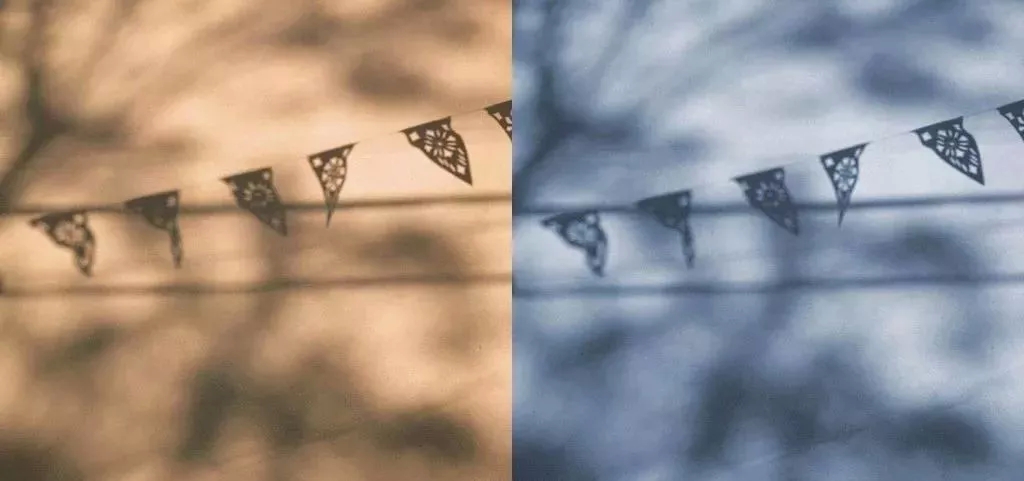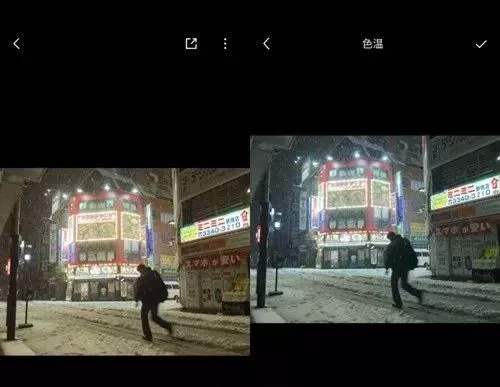Some people may think that mobile phone photography is difficult to convey some emotions. You are completely wrong if you think so. Although the shutter and picture quality of mobile phones are not as good as those of cameras, we can control the “color temperature” to make mobile photography convey more emotions. mood.
Color temperature refers to how “warm” or “cool” the colors in a photo are. From a warm orange to a cool blue, color temperature can have a big impact on your overall image. In a photo, a simple color shift can evoke very different feelings in the audience, from excitement to calm, from happiness to sadness…
In today’s article, I will tell you 4 tips to make your mobile photography work better convey emotions!

How does color temperature affect mood?
When we see different colors, our eyeballs subconsciously respond differently. When we are shooting, we can express various emotions by choosing to shoot objects of a certain color or a certain light, or adjusting the color temperature in post-processing.

In other words, in fact, you can adjust the color temperature to affect your first feeling when you see a photo. Look at the picture above to feel it.
Of course, there may be many colors that represent warm and cool tones, but today we will describe two typical color systems in color temperature, cool blue, warm red, and warm yellow.

Cool colors tend to evoke feelings of calm, peace, serenity, maybe even melancholy and loneliness, and they can also enhance the feeling of coldness in a scene.

Warm colors are more inviting and stimulating, creating a mood of joy, excitement or optimism, and likewise, they can enhance the feeling of warmth in a scene.
Without further ado, let’s take a look at these 4 techniques for creating emotions!
1. Shoot subjects with warm or cool colors
A relatively simple technique for expressing emotions is by photographing the color tone that matches the subject. Take a look at the two photos below and get a sense of how they make you feel.

For most people, bright orange flowers against a dark orange wall will evoke a sense of well-being.
In contrast, the blue tones of pebbles tend to create a calmer, calmer atmosphere. They might even remind you of feelings of depression and loneliness.

Let me give two more examples – this time walls of different colors, you can feel the first impression they give you.

Another way to capture cool-toned scenes is to shoot around the water, like the picture above, capturing the blue of the water and the blue of the sky at the same time. Such photos often bring a very calm feel to the audience. Creates a sense of peace and tranquility.
2. Shoot in warm or cool light
In addition to the first point, we can also consider the way to capture the color of the light. The color temperature of light changes throughout the day, and you can take advantage of this to add mood to your photos.

A period of time before sunrise or after sunset, probably early morning or evening, when the color temperature of the light is cool.

After sunrise and before sunset, the light is warm at this time.
It can be clearly seen that the emotions conveyed by the two photos above are different due to the huge difference in their color temperature. Cool tones give people a feeling of tranquility and melancholy, whereas warm tones give people a sense of happiness.
3. Show both warm and cool colors in one image
Can’t we be limited to the color temperature of a photo that can only be warm or cool, so they can’t appear in the same photo? This may be a more creative idea: to show both warm and cool colors in one photo.
Blue and yellow-orange contrast work well, as in this image.

I have to say, the contrasting colors are really eye-catching. After they are combined, they can collide with tension and novelty in the photo, and catch your eye all at once.
One of the easiest ways to capture these contrasting colors is to find a warm-toned subject, such as yellow buildings or orange hues found in autumnal nature, then add a blue sky or water surface to the composition and the contrasting colors will come out!
4. Adjust the color temperature through post-processing
In addition to the early preparations, we can also adjust the color temperature through some post-production apps.

For example, in the color palette app, after entering the filter, you will find that you can fine-tune individual parameters at the bottom right. At this time, we can find the logo of color temperature and click to adjust it.
By changing the color temperature, it may be possible to completely change the emotion expressed in the original scene. Take a look at the picture below, and you can feel it.
At the same time, everyone should also realize that during the shooting process, we cannot blindly think which color temperature is good and which color temperature is bad. There is no right or wrong color temperature itself, but it can help you better express your own Emotions.




